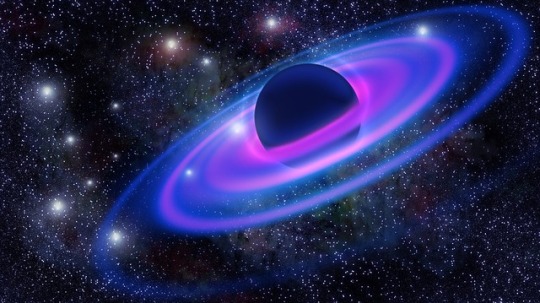Don't wanna be here? Send us removal request.
Video
youtube
NASA Astronauts Robert Behnken and Douglas Hurley undock from the International Space Station at 7:34 p.m. EDT tonight, bringing to a close their ~2 month Launch America mission. Check out these science highlights from the 100+ hours of work they completed aboard the orbital lab.
Watch live coverage of undocking and splashdown here: https://www.nasa.gov/nasalive
Make sure to follow us on Tumblr for your regular dose of space: http://nasa.tumblr.com
474 notes
·
View notes
Photo
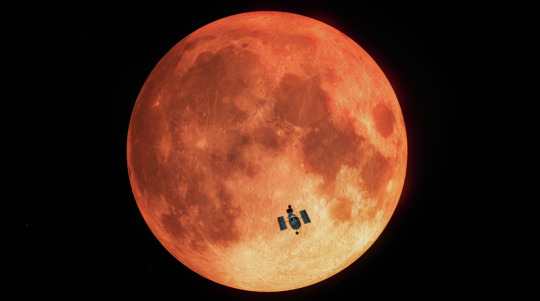
Taking advantage of a total lunar eclipse, astronomers using our Hubble Space Telescope have detected ozone in our atmosphere. Why’s this important? 🔭 Researchers can now use this new method – and space telescopes – to continue the search for life in our universe. Find out more HERE.
Make sure to follow us on Tumblr for your regular dose of space: https://go.nasa.gov/3fGbZ0I
2K notes
·
View notes
Photo
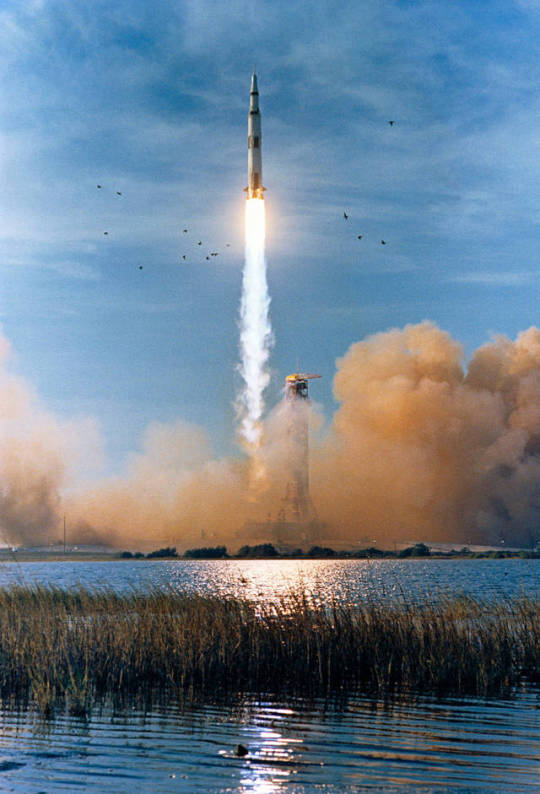
Fifty years ago on Dec. 21, 1968, Apollo 8 launched from Pad A, Launch Complex 39, Kennedy Space Center at 7:51 a.m. ES).
5 notes
·
View notes
Photo
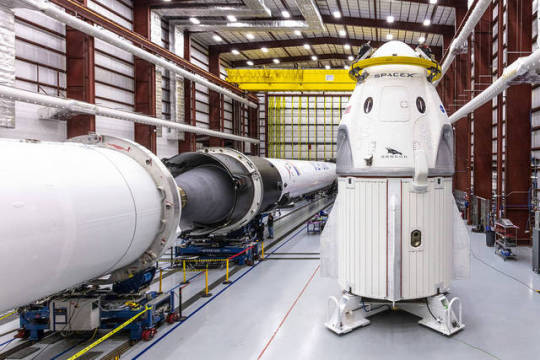
SpaceX’s Crew Dragon Spacecraft and Falcon 9 Rocket
SpaceX’s Crew Dragon spacecraft and Falcon 9 rocket are positioned at the company’s hangar at Launch Complex 39A at NASA’s Kennedy Space Center in Florida, ahead of the test targeted for Jan. 17, 2019.
1 note
·
View note
Photo
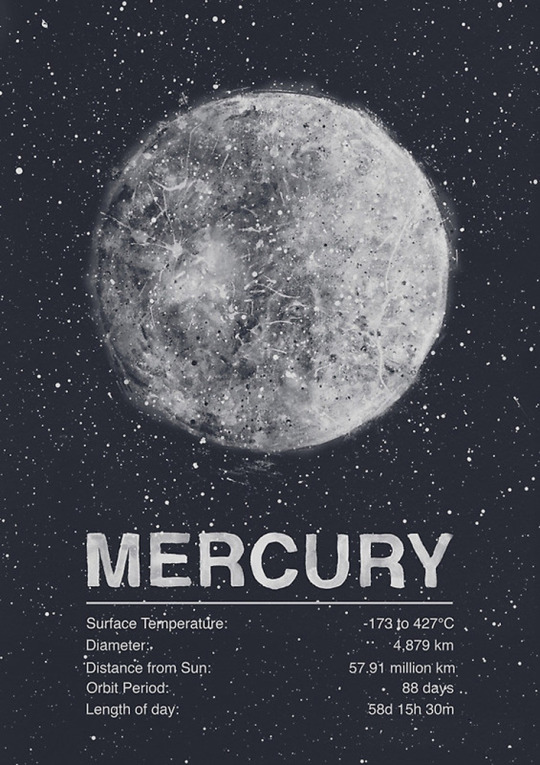
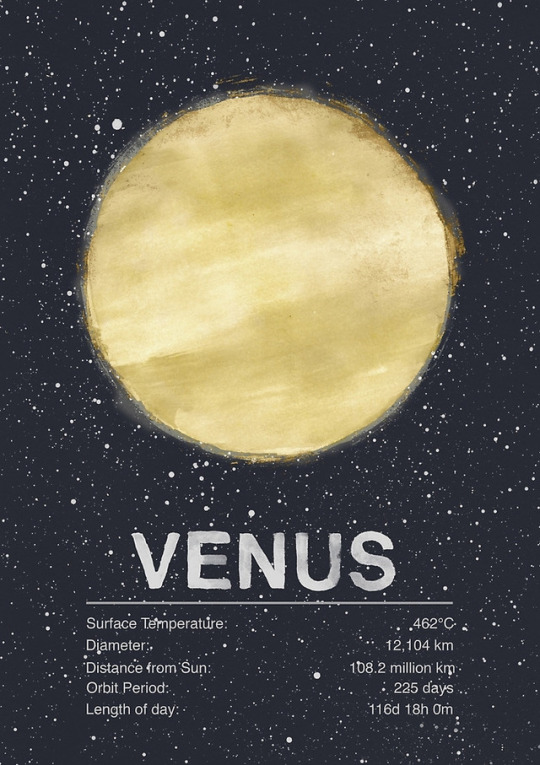
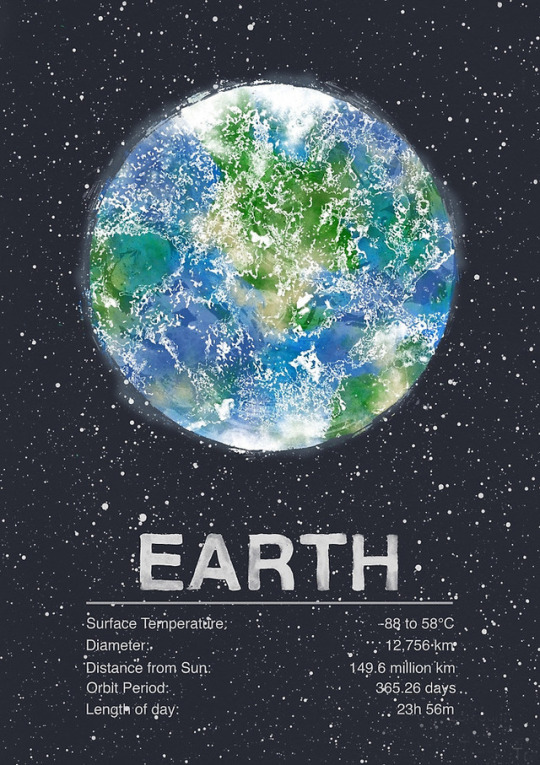
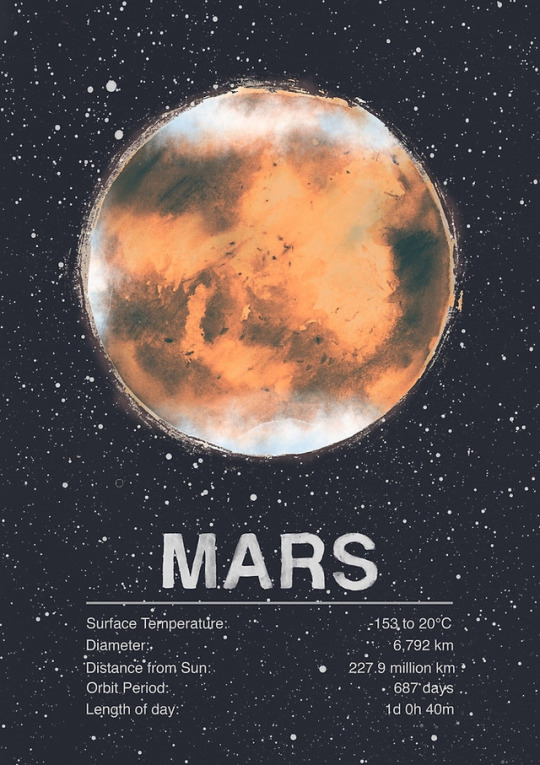
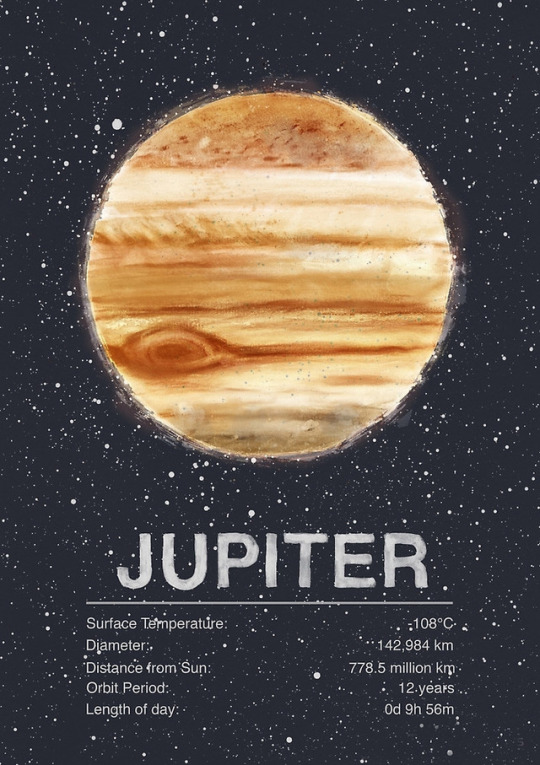
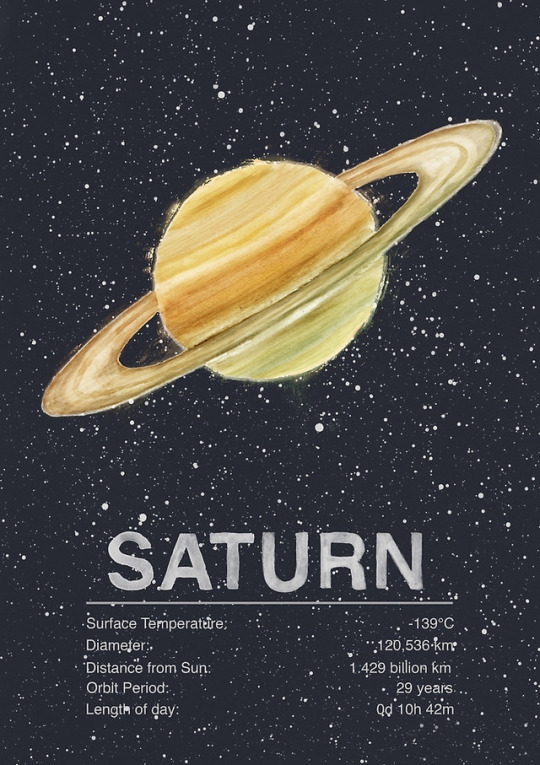

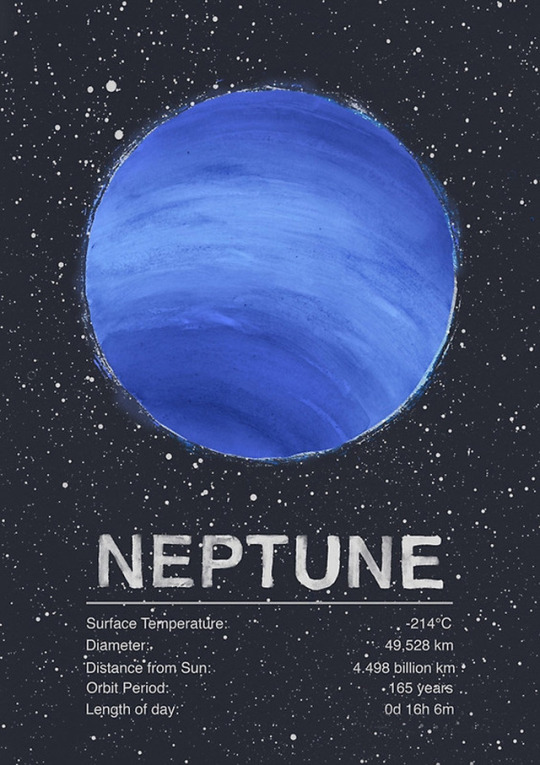
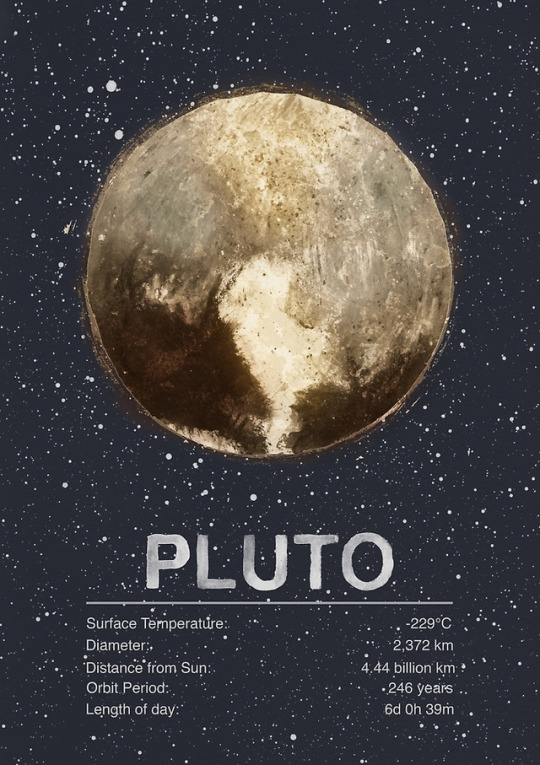
The planets! Includes surface temperature, diameter, distance from sun, orbit period, and length of day.
25K notes
·
View notes
Photo
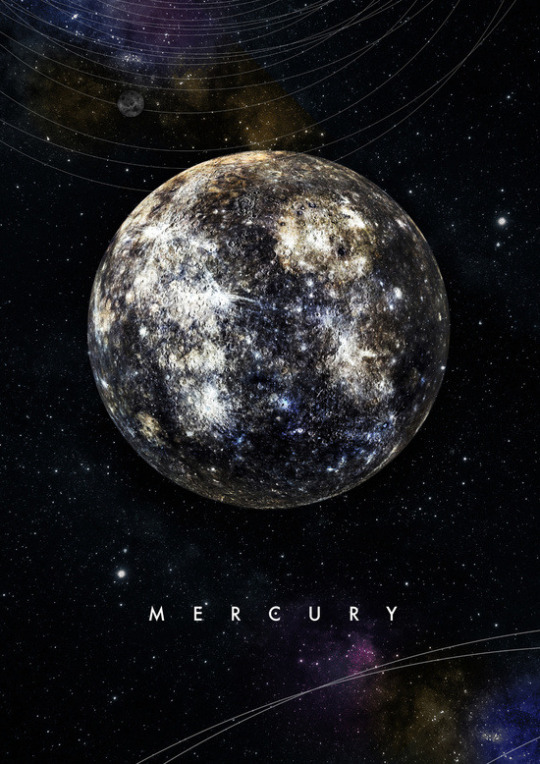
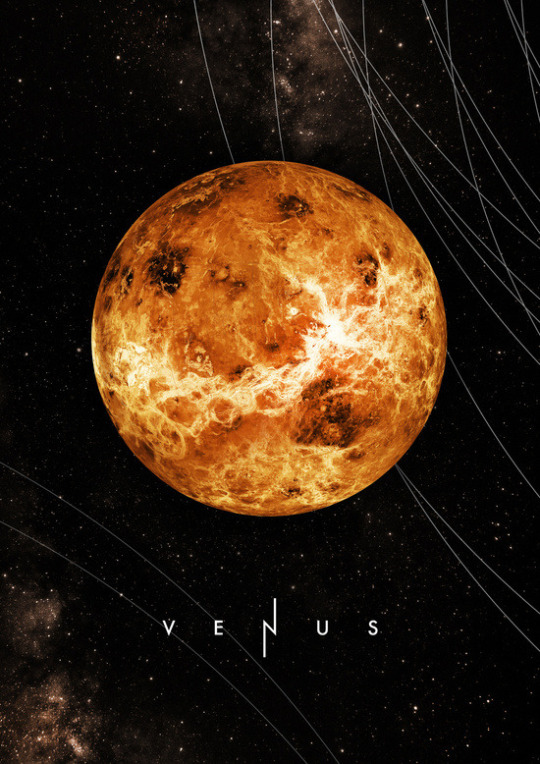
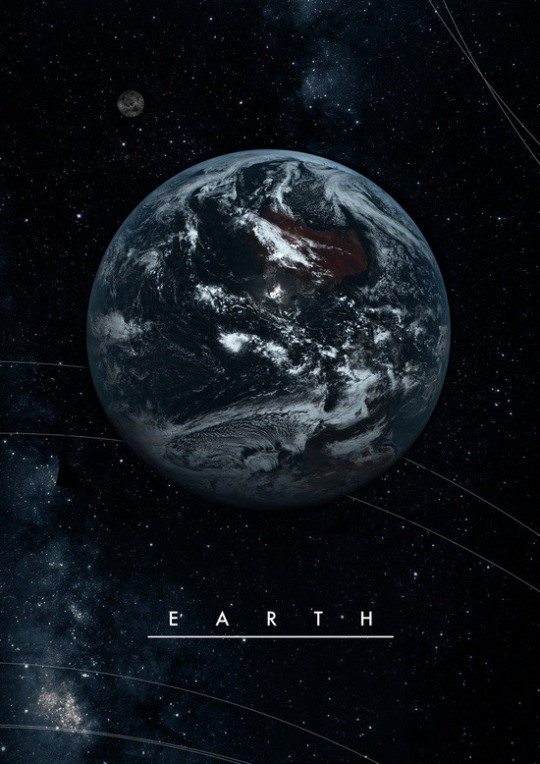
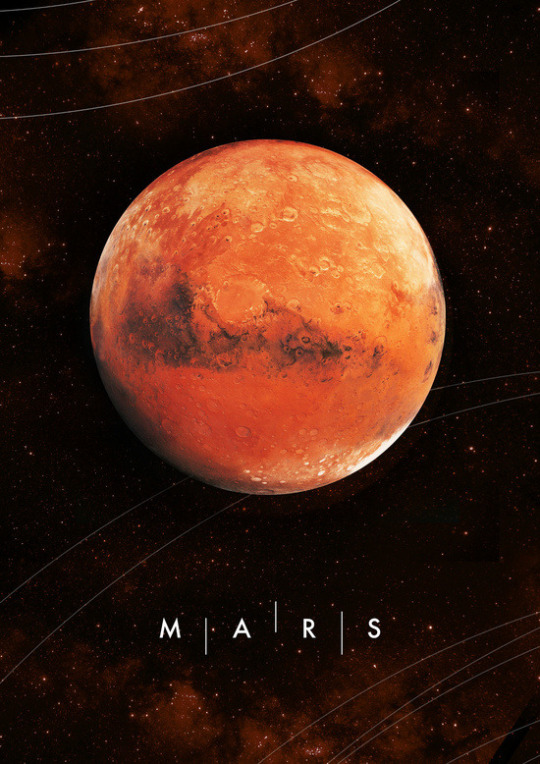
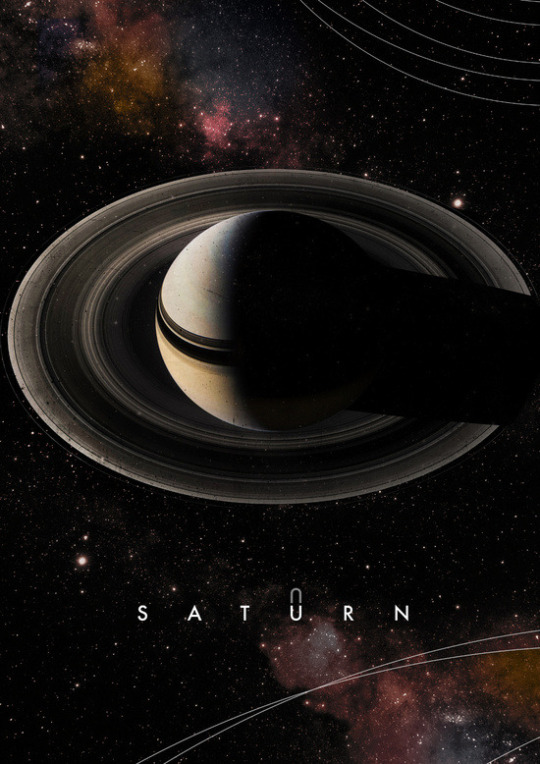
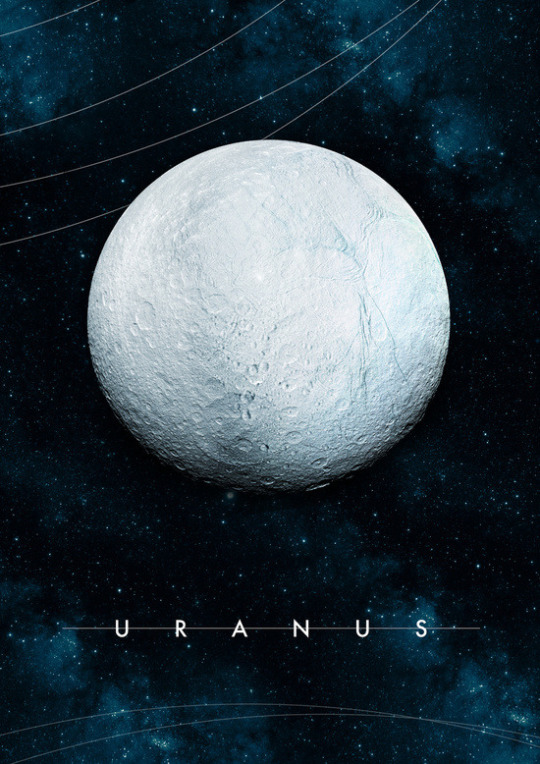

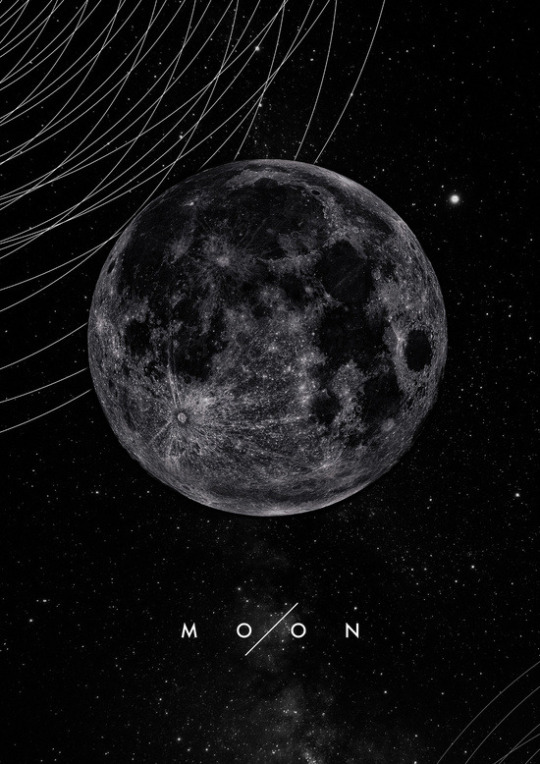
ALEXANDER POHL
More by the Artist Here
71K notes
·
View notes
Text
Solar System 10 Things: Looking Back at Pluto
In July 2015, we saw Pluto up close for the first time and—after three years of intense study—the surprises keep coming. “It’s clear,” says Jeffery Moore, New Horizons’ geology team lead, “Pluto is one of the most amazing and complex objects in our solar system.”
1. An Improving View

These are combined observations of Pluto over the course of several decades. The first frame is a digital zoom-in on Pluto as it appeared upon its discovery by Clyde Tombaugh in 1930. More frames show of Pluto as seen by the Hubble Space Telescope. The final sequence zooms in to a close-up frame of Pluto taken by our New Horizons spacecraft on July 14, 2015.
2. The Heart
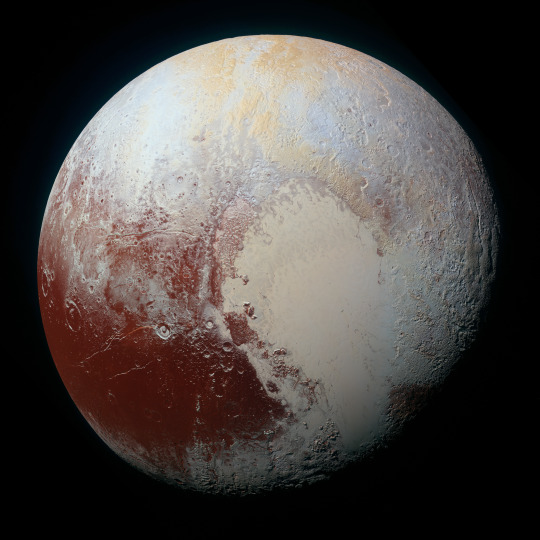
Pluto’s surface sports a remarkable range of subtle colors are enhanced in this view to a rainbow of pale blues, yellows, oranges, and deep reds. Many landforms have their own distinct colors, telling a complex geological and climatological story that scientists have only just begun to decode. The image resolves details and colors on scales as small as 0.8 miles (1.3 kilometers). Zoom in on the full resolution image on a larger screen to fully appreciate the complexity of Pluto’s surface features.
3. The Smiles
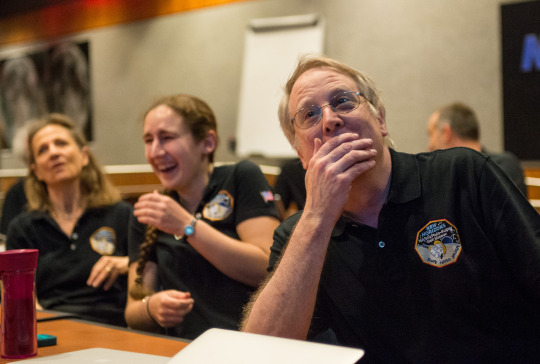
July 14, 2015: New Horizons team members Cristina Dalle Ore, Alissa Earle and Rick Binzel react to seeing the spacecraft’s last and sharpest image of Pluto before closest approach.
4. Majestic Mountains
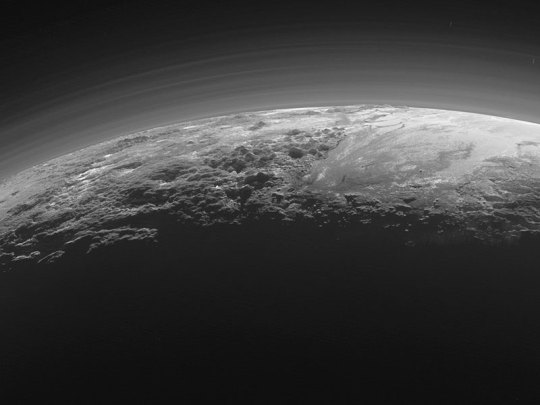
Just 15 minutes after its closest approach to Pluto, the New Horizons spacecraft captured this near-sunset view of the rugged, icy mountains and flat ice plains extending to Pluto’s horizon. The backlighting highlights more than a dozen layers of haze in Pluto’s tenuous atmosphere. The image was taken from a distance of 11,000 miles (18,000 kilometers) to Pluto; the scene is 780 miles (1,250 kilometers) wide.
5. Icy Dunes
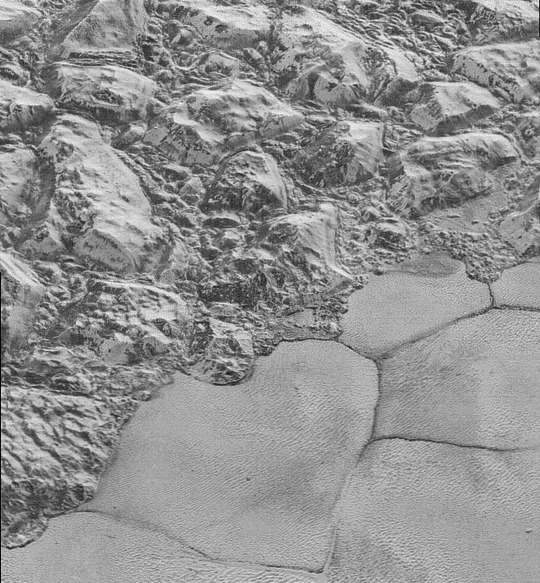
Found near the mountains that encircle Pluto’s Sputnik Planitia plain, newly discovered ridges appear to have formed out of particles of methane ice as small as grains of sand, arranged into dunes by wind from the nearby mountains.
6. Glacial Plains
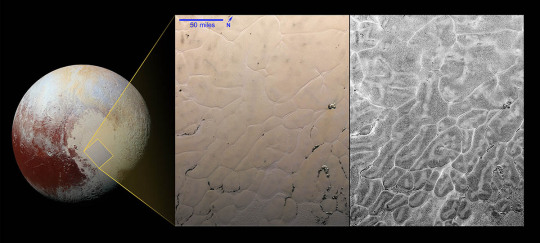
The vast nitrogen ice plains of Pluto’s Sputnik Planitia – the western half of Pluto’s “heart”—continue to give up secrets. Scientists processed images of Sputnik Planitia to bring out intricate, never-before-seen patterns in the surface textures of these glacial plains.
7. Colorful and Violent Charon
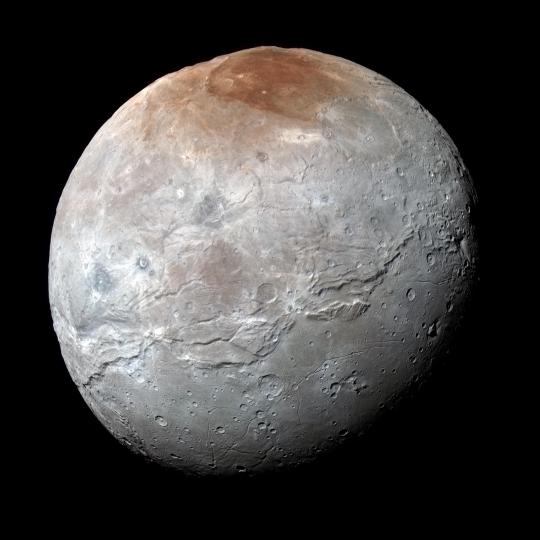
High resolution images of Pluto’s largest moon, Charon, show a surprisingly complex and violent history. Scientists expected Charon to be a monotonous, crater-battered world; instead, they found a landscape covered with mountains, canyons, landslides, surface-color variations and more.
8. Ice Volcanoes
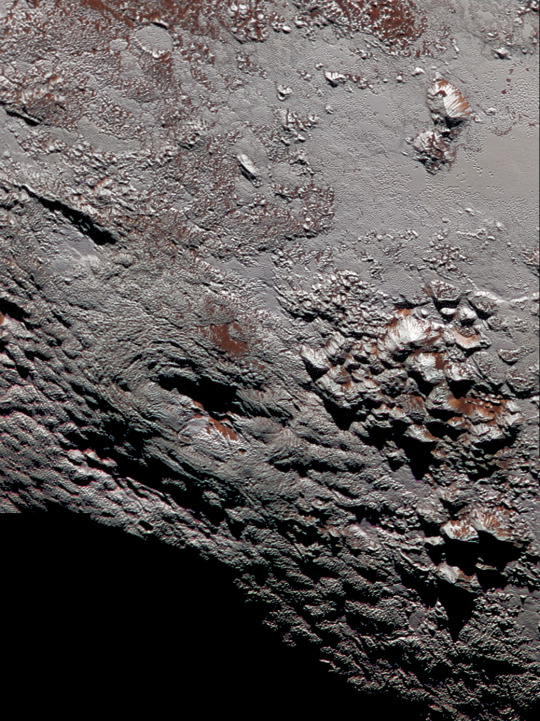
One of two potential cryovolcanoes spotted on the surface of Pluto by the New Horizons spacecraft. This feature, known as Wright Mons, was informally named by the New Horizons team in honor of the Wright brothers. At about 90 miles (150 kilometers) across and 2.5 miles (4 kilometers) high, this feature is enormous. If it is in fact an ice volcano, as suspected, it would be the largest such feature discovered in the outer solar system.
9. Blue Rays
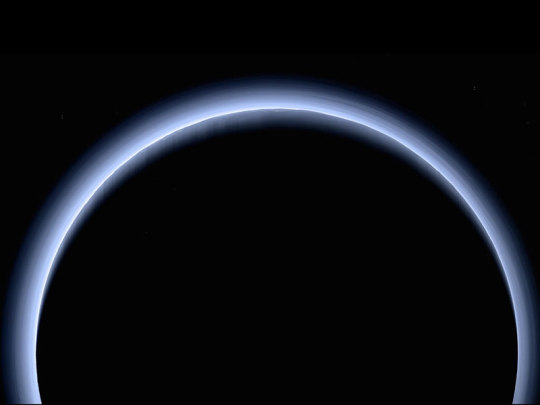
Pluto’s receding crescent as seen by New Horizons at a distance of 120,000 miles (200,000 kilometers). Scientists believe the spectacular blue haze is a photochemical smog resulting from the action of sunlight on methane and other molecules in Pluto’s atmosphere. These hydrocarbons accumulate into small haze particles, which scatter blue sunlight—the same process that can make haze appear bluish on Earth.
10. Encore
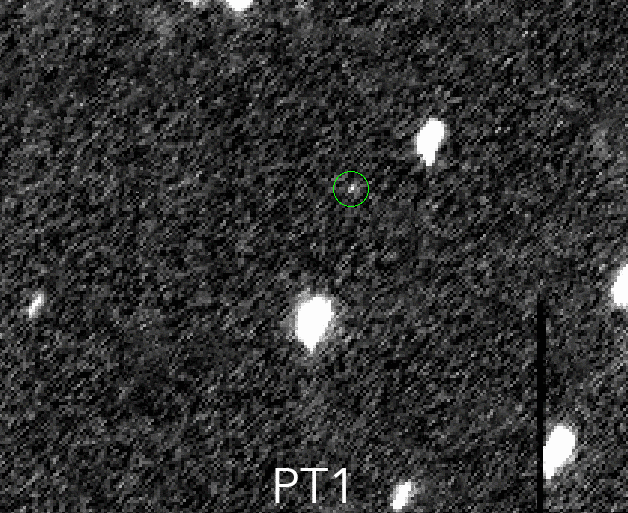
On Jan. 1, 2019, New Horizons will fly past a small Kuiper Belt Object named MU69 (nicknamed Ultima Thule)—a billion miles (1.5 billion kilometers) beyond Pluto and more than four billion miles (6.5 billion kilometers) from Earth. It will be the most distant encounter of an object in history—so far—and the second time New Horizons has revealed never-before-seen landscapes.
Make sure to follow us on Tumblr for your regular dose of space: http://nasa.tumblr.com.
5K notes
·
View notes
Text
We See Seashores Shifting with Satellites
If you’re like us, as soon as the summer Sun is out, you start feeling – well, just beachy, sand you very much.
Lots of our favorite beaches are inside protected marine areas, which are regulated by governments to keep their ecosystems or cultural heritage intact. If you beachcomb at Cape Cod, swim in the Florida Keys or learn about Hawaiian culture at Papahānaumokuākea Marine National Monument, congrats! You’ve visited a protected marine area.
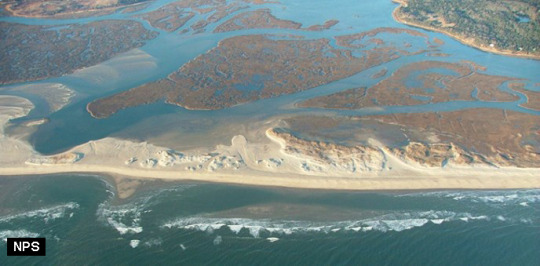
But time and tide haven’t been kind to some protected beaches.
Beaches are constantly changing, and science teams are using our 30-year record of Earth images from the NASA/USGS Landsat program to study what’s happening.
Overall, the sum total of sandy beaches has increased a bit over the last 30 years. But time and tide haven’t been as kind to our protected beaches – the team found that more than 1/3 of sandy beaches in protected marine areas have been eroding away.
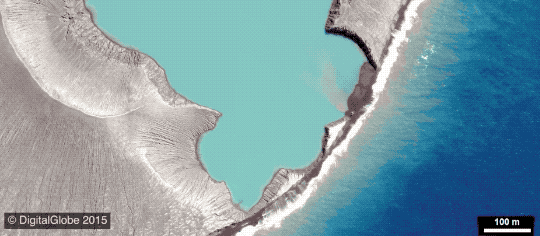
Some of these areas were designated to protect vulnerable plant and animal species or connect delicate ecosystems. They are home to humpback whales and sea turtles, reefs and mangroves that protect the land from erosion and natural disasters, and species which are found in only one habitat in the world. Losing land area could upset the balance of these areas and endanger their future.
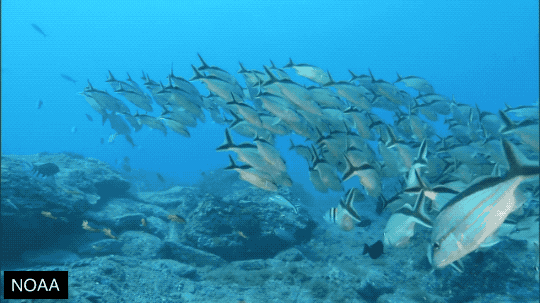
Next step: Looking for pearls of wisdom to save the beaches!
Right now, we aren’t sure which beaches are eroding due to natural processes, and which are due to humans – that’s the next step for science teams to investigate. Once we know the causes, we can start working on solutions to save the beaches.
Those 30 years of Landsat data will help scientists find answers to these questions much faster – instead of using airplanes or measuring the beaches by hand, they can use computer programs to rapidly investigate millions of satellite photos spanning many years of change.
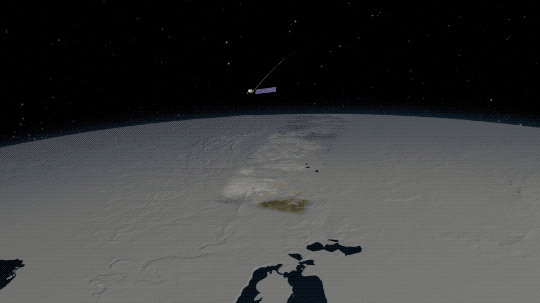
By tracking beaches from space, scientists can help keep our summers sandy for years to come.
And that makes us as happy as clams.
Read the full story HERE.
Make sure to follow us on Tumblr for your regular dose of space: http://nasa.tumblr.com.
1K notes
·
View notes
Text
Meet Parker Solar Probe, Our Mission to Touch the Sun
In just a few weeks, we’re launching a spacecraft to get closer to the Sun than any human-made object has ever gone.
The mission, called Parker Solar Probe, is outfitted with a lineup of instruments to measure the Sun’s particles, magnetic and electric fields, solar wind and more – all to help us better understand our star, and, by extension, stars everywhere in the universe.
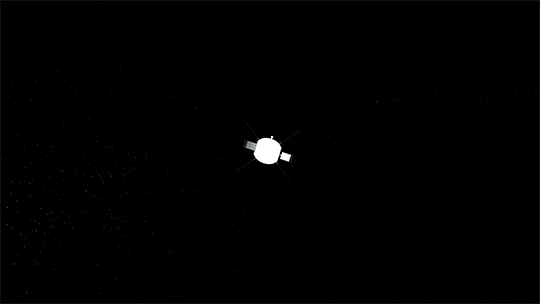
Parker Solar Probe is about the size of a small car, and after launch – scheduled for no earlier than Aug. 6, 2018 – it will swing by Venus on its way to the Sun, using a maneuver called a gravity assist to draw its orbit closer to our star. Just three months after launch, Parker Solar Probe will make its first close approach to the Sun – the first of 24 throughout its seven-year mission.
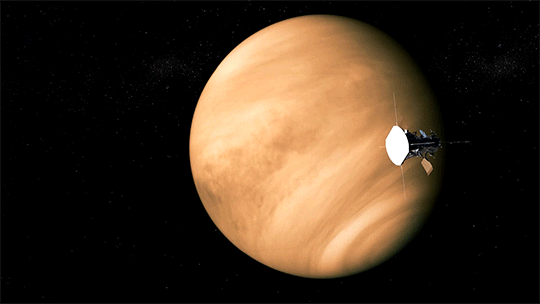
Though Parker Solar Probe will get closer and closer to the Sun with each orbit, the first approach will already place the spacecraft as the closest-ever human-made object to the Sun, swinging by at 15 million miles from its surface. This distance places it well within the corona, a region of the Sun’s outer atmosphere that scientists think holds clues to some of the Sun’s fundamental physics.
For comparison, Mercury orbits at about 36 million miles from the Sun, and the previous record holder – Helios 2, in 1976 – came within 27 million miles of the solar surface.
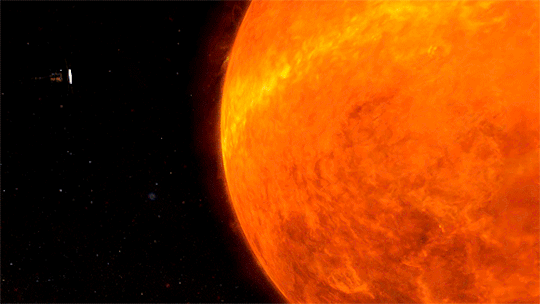
Humanity has studied the Sun for thousands of years, and our modern understanding of the Sun was revolutionized some 60 years ago with the start of the Space Age. We’ve come to understand that the Sun affects Earth in more ways than just providing heat and light – it’s an active and dynamic star that releases solar storms that influence Earth and other worlds throughout the solar system. The Sun’s activity can trigger the aurora, cause satellite and communications disruptions, and even – in extreme cases – lead to power outages.
Much of the Sun’s influence on us is embedded in the solar wind, the Sun’s constant outflow of magnetized material that can interact with Earth’s magnetic field. One of the earliest papers theorizing the solar wind was written by Dr. Gene Parker, after whom the mission is named.
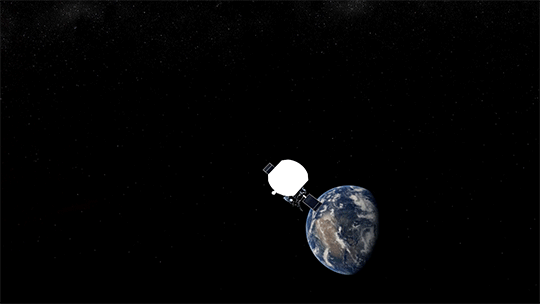
Though we understand the Sun better than we ever have before, there are still big questions left to be answered, and that’s where scientists hope Parker Solar Probe will help.
First, there’s the coronal heating problem. This refers to the counterintuitive truth that the Sun’s atmosphere – the corona – is much, much hotter than its surface, even though the surface is millions of miles closer to the Sun’s energy source at its core. Scientists hope Parker Solar Probe’s in situ and remote measurements will help uncover the mechanism that carries so much energy up into the upper atmosphere.
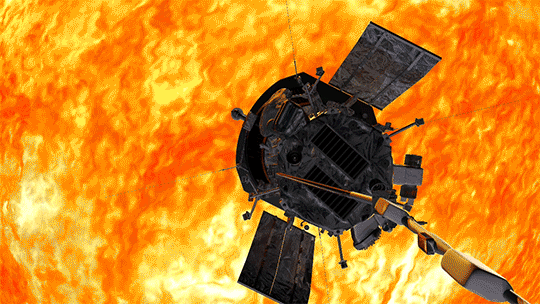
Second, scientists hope to better understand the solar wind. At some point on its journey from the Sun out into space, the solar wind is accelerated to supersonic speeds and heated to extraordinary temperatures. Right now, we measure solar wind primarily with a group of satellites clustered around Lagrange point 1, a spot in space between the Sun and Earth some 1 million miles from us.
By the time the solar wind reaches these satellites, it has traveled about 92 million miles already, blending together the signatures that could shed light on the acceleration process. Parker Solar Probe, on the other hand, will make similar measurements less than 4 million miles from the solar surface – much closer to the solar wind’s origin point and the regions of interest.
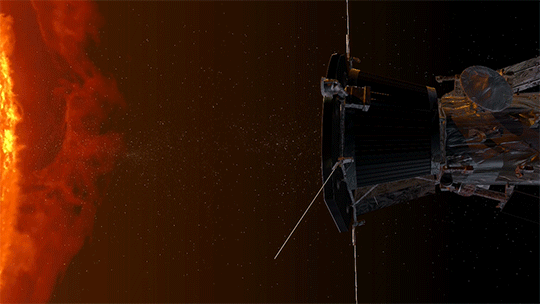
Scientists also hope that Parker Solar Probe will uncover the mechanisms at work behind the acceleration of solar energetic particles, which can reach speeds more than half as fast as the speed of light as they rocket away from the Sun! Such particles can interfere with satellite electronics, especially for satellites outside of Earth’s magnetic field.
Parker Solar Probe will launch from Space Launch Complex 37 at Cape Canaveral Air Force Station, adjacent to NASA’s Kennedy Space Center in Florida. Because of the enormous speed required to achieve its solar orbit, the spacecraft will launch on a United Launch Alliance Delta IV Heavy, one of the most powerful rockets in the world.
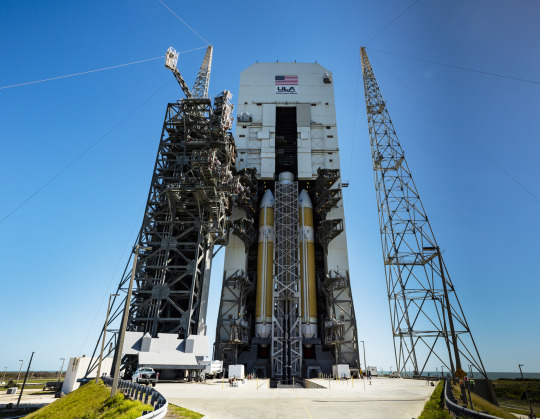
Stay tuned over the next few weeks to learn more about Parker Solar Probe’s science and follow along with its journey to launch. We’ll be posting updates here on Tumblr, on Twitter and Facebook, and at nasa.gov/solarprobe.
Make sure to follow us on Tumblr for your regular dose of space: http://nasa.tumblr.com
2K notes
·
View notes
Photo
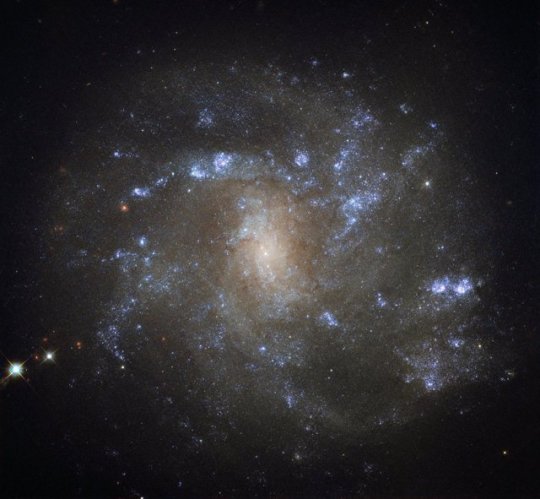
Hubble Traps a Lynx Barred Spiral : NGC 2500 is a particular kind of spiral galaxy known as a barred spiral, its wispy arms swirling out from a bright, elongated core.
js
1K notes
·
View notes
Photo
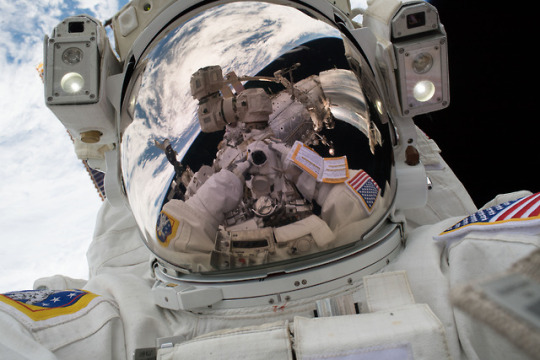
Mark Vande Hei’s ‘Space-Selfie’ : On Tuesday, Jan. 23, 2018, spacewalker Mark Vande Hei snapped his own portrait, better known as a “space-selfie,” during the first spacewalk of the year. (via NASA)
3K notes
·
View notes
Photo
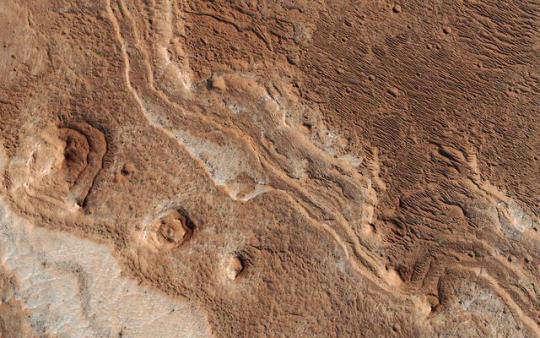
Eroded Layers in Shalbatana Valles : Layers, probably sedimentary in origin, have undergone extensive erosion in this image from NASA’s Mars Reconnaissance Orbiter (MRO) of Shalbatana Valles, a prominent channel that cuts through Xanthe Terra. (via NASA)
554 notes
·
View notes
Text
Electroneum is a mobile friendly cryptocurrency. It can be mined using electroneum's mobile app. You can earn electroneum even when the app is running in the background.

http://www.sciencetechbytes.com/how-to-buy-electroneum-cryptocurrency/
0 notes
Photo
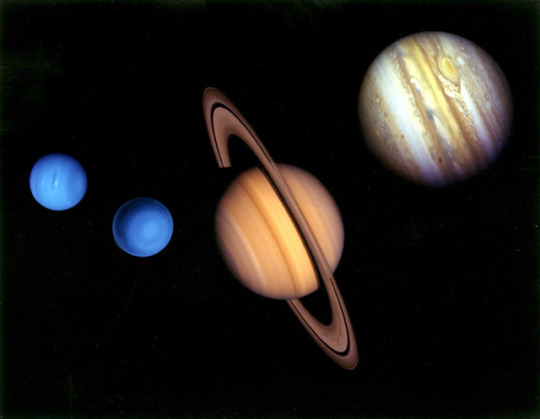
Made from images taken by the 2 Voyager spacecraft.
Visit www.sciencetechbytes.com
5 notes
·
View notes
